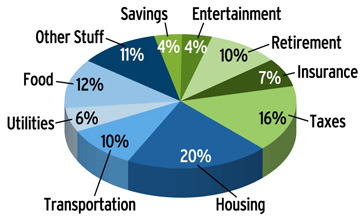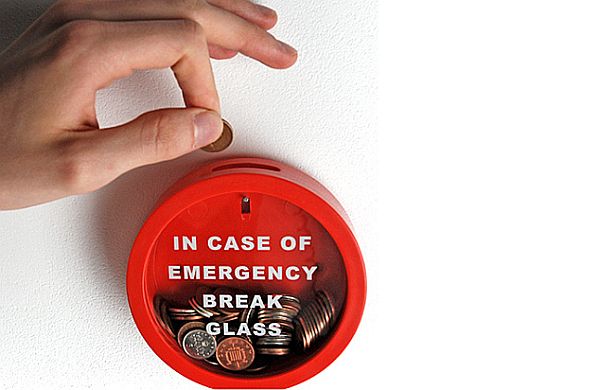Retirement may seem like a lifetime away, so much so that saving for retirement may have yet to cross your mind. People may consider retirement to be twenty, thirty, or even forty years from now, it’s important that you start saving for retirement immediately. A recent study sponsored by Sun Life Financial-Philippines found that only 2 out of 100 Filipinos, age 65 and older are financially independent. This highlights the need to plan your retirement early so you can avoid struggling later in life. Imagine the bills you are currently paying, now that you have a regular paycheck. You will still pay the same bills, possibly more, during retirement, and without a paycheck at that.
A successful retirement starts with a retirement plan. If you have no idea where to start, follow these guide, originally from iMoney. This steps are your guide in building your own retirement plan. If done properly, these steps are your first in your path to a rich retirement!
1. Set Your Retirement Goal
Before you start developing a retirement savings plan, it’s a good idea to think about the kind of lifestyle you would like to live once retired. This will be the benchmark that you need to follow in setting your savings plan. Whether you plan to do a lot of traveling, or retire on a farm somewhere else in the Philippines or in a different country, you will probably need to start saving more aggressively. Setting your goal for retirement will help you understand how aggressive you need to be with your savings.
Before you start developing a retirement savings plan, it’s a good idea to think about the kind of lifestyle you would like to live once retired. This will be the benchmark that you need to follow in setting your savings plan. Whether you plan to do a lot of traveling, or retire on a farm somewhere else in the Philippines or in a different country, you will probably need to start saving more aggressively. Setting your goal for retirement will help you understand how aggressive you need to be with your savings.
2. Open A Savings Account
One of the first steps to help you retire comfortably is to open a savings account where you can earn interest on the money you put into your retirement fund. Trying to determine which is the right savings account for you involves many factors. Things like initial deposit, interest rate, maintaining balance, and the account balance needed to earn interest should all be taken into consideration before opening a savings account in the Philippines. You will also want to take into consideration the bank's reputation, their branch locations, and the availability of online banking transactions.
A good starter savings account in the Philippines is BPI Easy Saver. With just ₱200.00 for initial deposit, no maintaining balance requirements, and a 0.25% annual interest rate if you maintain a balance of ₱1,000, this is an easy option. Another easy choice is the EastWest Bank Basic Savings Account, where you can open a savings account with only a ₱100.00 initial deposit. You will start earning as interest of 0.125% annually when your account reaches at least ₱500.
If you are able to put down a bigger initial deposit, here are your best options where to open a savings account in the Philippines.
3. Start Saving Now
Financial gurus suggest that you should start saving 10% to 15% of your total income for retirement when you reach your early twenties. However, you do not need to stick to 10% or 15% of your total income, depending on your financial situation. The important thing to do is to start saving any decent amount of money as early as you can.
Saving for retirement may be boring or a burden, but if you think of it as paying your future self, it becomes a bit more important and interesting. If the situation limits your ability to save 10-15% of your annual income for retirement, start smaller. It’s OK to start at around 2-3% of your annual income, and then gradually increase your savings percentage every few months. If you get a raise at work, or a chance to earn overtime, increase your savings percentage accordingly. Do not be discouraged if you can only save a small percentage initially. build on to this and make it a goal to raise your savings. Saving a small amount is always better than saving nothing at all.
4. Set Up Automatic Deposits
If your bank has it, set-up an Automatic Deposit for your account. Automating your savings contributions will help you build your retirement fund systematically and quickly, and with little effort on your part. There is less chance that you will divert your savings for unnecessary spending. Schedule your automatic deposits around the time you receive your pay check. You may even find that living off less is easier than you would have expected.
If your bank has it, set-up an Automatic Deposit for your account. Automating your savings contributions will help you build your retirement fund systematically and quickly, and with little effort on your part. There is less chance that you will divert your savings for unnecessary spending. Schedule your automatic deposits around the time you receive your pay check. You may even find that living off less is easier than you would have expected.
5. Seek Investment Options
One of the best ways to boost your retirement coffers is to consider investment opportunities. If you think you need a large amount of money to make investments, you’re wrong. Investments, however small, will help prepare you for retirement. Start small, and start as early as possible. Also, make a habit of learning the different investment modes and opportunities since you can keep on investing even during retirement.
Whether you are afraid of risk or a risk-taker, there is an investment product to suit your preference. You can start with a Mutual Fund, Unit Investment Trust Fund, or the Stock Market. Stocks provide the highest potential earnings, but also carry a higher amount of risk than a mutual fund or unit investment trust fund.
Investments may seem scary if you do not know much about them, or have not had much experience with them. The thought of potentially losing money is scary. Learning about all your options, and consult a professional before jumping into any type of investment.
A financial planner will help you come up with a plan that is right for you. An example is Sun Life Financial. They have advisers who specialize in helping people make sense of retirement and investment options.
6. Open A Time Deposit
If you’re serious about saving for retirement now, opening a time deposit is a smart move. A time deposit is essentially a fixed deposit at a bank, which you cannot touch during a certain agreed upon time. In return, you are offered a higher interest rate than a regular savings account. A time deposit is a great product to get, as an additional option to your savings account to boost your retirement money.
While a time deposit provides you with the benefit of a higher interest rate, any interest you earn will be subject to a 20% monthly tax for every interest earned on your account. There is also a documentary stamp tax to deal with where you will be charged ₱1.00 for every ₱200.00 of the principal amount. This may be turn-off some people.
As we stated, a time deposit is a great way to help you build your retirement savings account at no risk to you. If you want to get a time deposit, the first step is to use a time deposit calculator to help you find a bank and product that best suits your individual retirement needs.
7. Set Aside Money for Emergencies
It’s easy to completely forget the potential for emergencies to happen, especially when you are focused on building your retirement budget. Various emergency expenses happen, and you don’t want to have to dig into the money you’ve set aside for retirement, to pay for an unexpected trip to the hospital, damage to your home, or to front the bill for an expensive car repair.
One good way to set aside a separate budget for emergency is to set up a separate savings account. From each paycheck, add a little bit of money into this account. If you get a salary raise or a one-time bonus from work, add a big portion of it to your emergency fund. Putting even a small amount in your emergency account every month is better than contributing nothing at all. You will be surprised by how much you can save over the course of a year.
8. Find Additional Career Opportunities
If you feel like you’re retirement fund is still below your target after following these steps, consider seeking out additional income sources. You don’t have to get a second full-time job, instead find one that would provide you with the freedom of working when you want, while also having a favorable opportunity of making some extra money to put towards your retirement. You could even deposit all the money that you make from your freelancing job into your retirement savings account. Search online for some ideas on freelancing jobs.
If you freelancing simply isn’t possible, or if you do not see yourself in such an arrangement, consider a promotion in your current career instead. Could you get any certifications to help you get that raise? Would your work be willing to pay for you to go back to school and get an advanced degree? Neither one of these options will help you save money right now, but investing in yourself will surely pay off in the long-run.
Final Thoughts
As your status in life evolve, so will your retirement plan. The most important thing to keep in mind is that your plan should evolve to to reflect the current status you are in. It’s normal to make changes to it. Make modifications to your retirement plan to compensate for any changes in your current status - getting married and starting a family, buying a house, career-change, and many more.
Make it a habit to go over your retirement plan on a regular basis, annually or semi-annually. Take into consideration all the aspects of your life that have changed. Making a savings plan and sticking to it will be the key to helping you retire rich. It may be hard and painful at first, but you will look back to when you started this journey and thank yourself you did it in the first place.
source: iMoney
©2017 THOUGHTSKOTO
SEARCH JBSOLIS, TYPE KEYWORDS and TITLE OF ARTICLE at the box below












